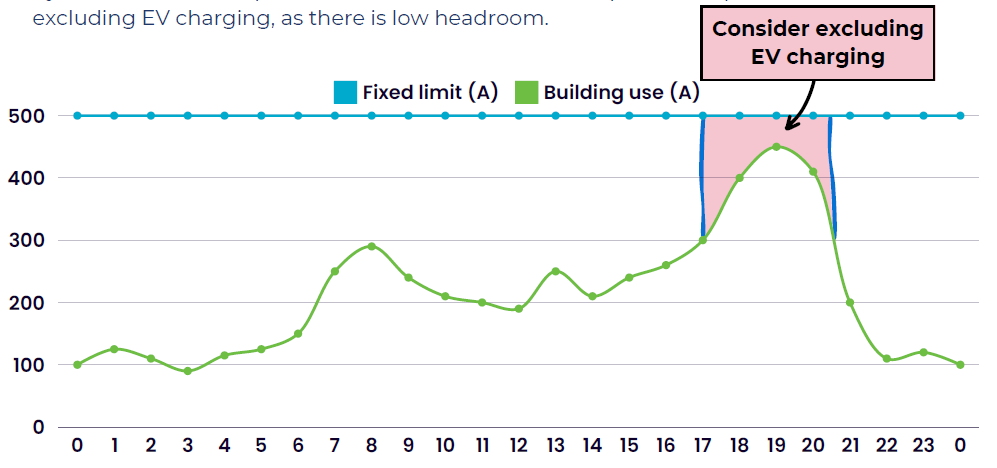Calculating maximum demand for EV chargers in apartment complexes
Calculating the maximum demand for EV chargers in an apartment complex is crucial. Sean Carroll looks at how it’s done and what electricians should recommend to end users.
The clock strikes five o’clock, everyone switches their computers off and rushes home, there’s dinner to make, there are dogs to be walked and there is a couch with your name on it. If this person is an electric vehicle (EV) driver, something that’s more likely with the number of EV sales increasing, if they’re not on a time-of-use retail plan, they’ll plug their vehicle when they get home.
ADVERTISEMENT
Electrical Connection has written about the potential maximum demand on the grid and single households and what electricians can do to ensure the end user has a seamless experience. This topic is more difficult when it comes to apartment complexes.
Maximum demand is defined as the expected peak load of an electrical system. It’s determined at the time of design or modification to the electrical installation, to inform the required capacity of upstream electrical equipment in accordance with Section 2.2.2 of AS/NZS 3000:2018, the Wiring Rules.
There can be negative consequences if the incorrect determination of maximum demand is obtained including raising the overall price of the installation, tripping circuit breakers or blowing fuses. Getting it right is crucial.
Title: Calculating the dynamic limit of an electrical installation’s connection capacity
Caption: The blue lines represent the dynamic limit at two points in time while the shaded area represents a period to consider excluding EV charging as there is low headroom.
The Standard outlines four methods for determining maximum demand as part of the installation. The most relevant to installing EV chargers in apartment complexes are calculation and assessment, followed by limitation and measurement. This article will look at three of those methods.
Assessment
There are several ways to assess an electrical installation. One way is to draw up a table of all loads present, including their nameplate rating, normal condition current draw, power factor and when the loads will be drawing, to add up the overall draw at any one time. For large installations with many loads, this would be too time-consuming.
AS/NZS 3000:2018 Clause 2.2.2 states that: “The maximum demand may be assessed where – (i) the electrical equipment operates under conditions of fluctuating or intermittent loading, or a definite duty cycle…”
Applying control to electrical equipment in your installation, such as a load management system, can ensure a definite duty cycle.
The underpinning assumption is that the implementation of a suitable load management system in the context of an apartment complex can ensure that EV charging is actively prevented from contributing to building-level maximum demand.
Using this guideline, “suitable load management” is comprised of two aspects:
- Primary load management, which is the part of the system that operates all the time and which defines the user experience; and
- Back-up load management, which only comes into play if the primary system fails to perform correctly, but guarantees that the EV load will not compromise the rest of the building’s electrical supply.
Measurement
When using the measurement method for an apartment complex, smart meter interval data of at least a year should be obtained. This will show the maximum current draw in all seasons and most conditions.
For most of Australia, peak demand will likely be seen in the summer months, but for other areas like Tasmania, peak demand may appear in the winter months. The measurement method by nature does not allow for future additions of load or changes in conditions, such as very hot days, unless that load is controlled.
The measurement method is useful for building retrofits that require EV charging to be available at any time. For example, a shared charging facility is intended to be available on demand. The maximum demand can be determined by adding the peak load current over the previous years of data log, to the full load current of the EV supply equipment (EVSE) proposed for installation. If that number is lower than the size of the supply, a connection upgrade can typically be avoided.
As an example, say there’s an apartment building with a supply sized at 500A measures the historical usage in the building and finds that the historical peak usage is 300A.
After surveying the residents, the owner’s corporation decides that they want to install three 25kW DC chargers in a shared area, accessible to the residents at any time. This equipment has a combined, total full-load current of 100A.
The combination of the 300A determined via the measurement method, with the addition of the full load current of the new EV charging equipment, totals 400A.
A full calculation of everything on the whole site downstream of the existing 500A connection is not required to make the decision around the suitability of the existing supply being sufficient to support the new load, which will contribute, at most, an additional 100A.
Limitation
The limitation method uses circuit breakers and is discussed in more detail in the ‘Determining maximum demand for a domestic EV charger installation’ guideline (found on the EVC website).
In the setting of a domestic home, the usage of the limitation method for maximum demand determination when installing a typical EVSE is reasonable, because the likelihood of nuisance tripping is low, and the consumer will be easily able to resolve the nuisance trip without calling in a service provider.
In a more complex building, it’s not reasonable to rely solely on limitation to manage maximum demand when adding EV charging equipment.
If you’d like to discuss these matters further, you can read the full report on the EVC’s website (evc.org.au) or contact them at office@evc.org.au.
-
ADVERTISEMENT
-
ADVERTISEMENT




